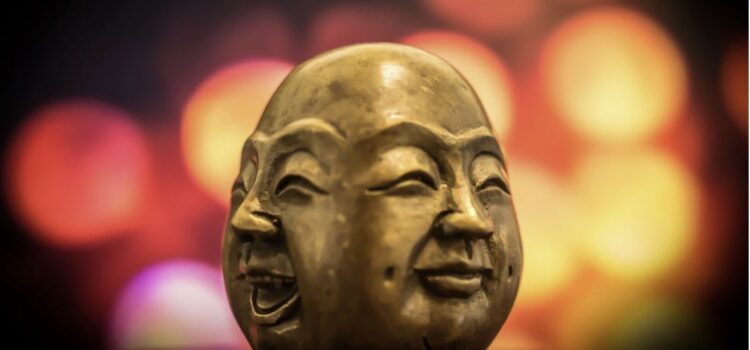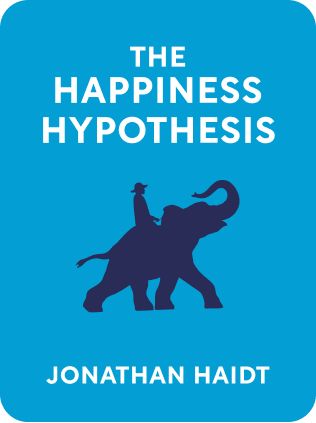

This article is an excerpt from the Shortform book guide to "The Happiness Hypothesis" by Jonathan Haidt. Shortform has the world's best summaries and analyses of books you should be reading.
Like this article? Sign up for a free trial here .
Have you ever noticed that some people seem to get much happier or much more down than others? Do all people feel emotions the same way? How can we work to stay on the happy end of the emotional range?
A person’s emotional range is called their affective style. This means that some people have a genetic predisposition toward happiness or sadness and feel different ranges of emotion. When somebody’s emotions tend to fall on the negative side of the range, there are measures they can take to counter them.
Keep reading about the emotional range and how to counter negative thoughts.
The Emotional Range
In the rider and the elephant metaphor, the elephant determines our likes and dislikes, often in ways that we’re not consciously aware of. These emotional cues color our thinking, causing the elephant to dominate the rider. A perceived threat will make us consciously evaluate all stimuli as possible threats; a rush of sadness will cause us to adopt a more bleak way of looking at the world as a whole. These are the basic mental preconditions that affect all humans.
In general, emotion is always a stronger force within the mind than reason. And if we delve a bit further, we discover that an individual’s general emotional state isn’t solely determined by the stimuli they encounter; it’s also influenced by a genetic predisposition toward happiness or sadness known as the affective style.
But we should be clear. Your affective style doesn’t set your level of happiness in stone. The affective style is best thought of as an emotional range or emotional thermostat—some people simply have higher happiness levels at the upper end of their range than others. But within those constraints, there’s still great potential for improvement. Even if you have a negative affective style, you can still become happier. Moving to the upper levels of your emotional range is akin to taming the elephant and guiding it down a different path. Effective methods for doing this include meditation, cognitive therapy, and serotonin reuptake inhibitors (SSRIs).
Meditation
Meditation, widely practiced in eastern religions, is a way of focusing the mind and blocking out the constant verbal commentary running through one’s head. Typically, it entails sitting still and focusing on a single word or idea. It’s not easy to do at first, but it can be highly effective at breaking attachments (desires for material things, but also certain emotional drives like sex). Such attachments often power our negative thoughts (because we have such a deeply ingrained sense of loss aversion and fear losing those things that we already have).
According to proponents of meditation, eliminating one’s attachments as much as possible will maximize one’s happiness in the long run because the psychological costs of losing are so much higher than the psychological gains of winning. Once you acquire things that you become attached to, your mind will be dominated by fear of losing them. Instead, it’s better to shed those attachments entirely.
Cognitive Therapy
People who suffer from negative thinking can also be trapped in a painful and negative feedback loop. They start with low self-esteem. And because emotion (the elephant) informs rational thought (the rider), these individuals selectively seek out “proof” to confirm their belief that they’re worthless, often by magnifying minor setbacks into major catastrophes. This “proof,” in turn, further reinforces the original negative beliefs.
What can break this pattern is the technique of cognitive therapy. Cognitive therapy challenges patients to consciously question their ingrained patterns of negative thinking. Practitioners encourage patients to label these thoughts as they happen and identify more positive and realistic ways of interpreting the events in their lives.
Thus, instead of thinking “I’m stupid and worthless and doomed to a life of failure” after performing poorly on a test, a patient undergoing cognitive therapy might reorient their emotions toward something more along the lines of “It was just one test; it doesn’t define my life.” Over time, the patient’s automatic thought patterns become more positive. In essence, cognitive therapy is the rider training the elephant not to lunge toward fear and sadness and to stay on the positive side of their emotional range.
SSRIs
SSRIs (serotonin reuptake inhibitors) are a class of drug that includes Prozac and Zoloft. They have been shown to be remarkably effective in treating many mental health disorders, from clinical depression to eating disorders.
But these drugs have also generated some controversy precisely because they are seen as quick-fixes. Critics worry that SSRIs let people eschew the hard work of becoming “better” people and enable them to transform into something other than their “true” self.
But what if the “self” as it occurs naturally is a vessel for unhappiness and dissatisfaction, as it is in so many people on the negative side of the emotional range? If SSRIs can make people more happy, productive, and fulfilled, why are they harmful? We should think of them as purely mechanical—fixing something that’s broken and causing pain. After all, when we change a deflated tire on a car or replace a burned-out lightbulb on a lamp, we don’t decry these actions as altering the “true” nature of the car or the lamp.

———End of Preview———
Like what you just read? Read the rest of the world's best book summary and analysis of Jonathan Haidt's "The Happiness Hypothesis" at Shortform .
Here's what you'll find in our full The Happiness Hypothesis summary :
- How your emotions determine how satisfied you are in life
- Why you need to struggle in order to succeed
- How to create your own happiness






